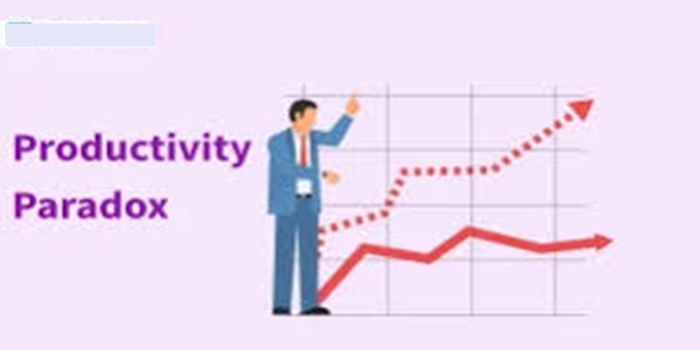In this article, we discussed the meaning of productivity paradox, the history, the solution, furthermore we also talked about the effect and signs
Definition
The productivity paradox is the idea that increased investment in information technology (IT) doesn’t lead to increased productivity. It’s also known as the Solow paradox.
The productivity paradox can occur when new technologies replace workers instead of creating new jobs. It can also occur when the benefits of new technologies aren’t counted in economic statistics. For example, the convenience of using a computer might not be counted.
The productivity paradox can also occur when there’s a lag between when a new technology is developed and when it’s widely used.
The History
The idea of the productivity paradox originated in the 1980s, it was discussed in a New York Times book review by Solow in July 1987, the work of Stephen Roach, a Morgan Stanley consultant, also contributed to the discussion
The 1970s to 1980s productivity paradox has been defined as a perceived “discrepancy between measures of investment in information technology and measures of output at the national level.” Brynjolfsson documented that productivity growth slowed down at the level of the whole U.S. economy, and often within individual.
The Solution of Productivity Paradox
The productivity paradox is when increased investment in technology results in lower worker productivity. Solutions include:
Training employees: Provide employees with the skills and training to use technology effectively.
Supporting technology: Ensure that technology has the necessary infrastructure to support it.
Measuring productivity: Use clear metrics that account for the impact of technology on services and other areas.
Incentivizing employees: Create incentives for employees to adopt new technology.
Encouraging innovation: Promote an environment that encourages the development of new technologies.
Redefining productivity: Consider how technology can be used to redefine productivity.
Leveraging technology: Use technology judiciously to maximize its impact on productivity.
Embracing flexibility: Be flexible and adapt to changes in the workplace.
Fostering a culture of improvement: Encourage a culture of continuous improvement.
The Benefits of Productivity Paradox
However, there are benefits to improving productivity, including:
More efficient work environment: When employees are more productive, they may feel more satisfied and have higher morale.
Improved resource allocation: Businesses can identify and fix inefficiencies to use resources like time, money, and people more effectively.
Better scalability: Businesses can grow without increasing costs proportionally.
Increased competitiveness: Organizations can stay competitive and achieve their goals.
Improved work-life balance: Flexible work arrangements can improve work-life balance.
Better communication and innovation: Technology can improve communication and innovation in the workplace.
The Effects of the productivity paradox can include:
Employee frustration
Employees may feel demoralized if they don’t see their efforts resulting in better productivity. This can lead to burnout, increased stress, and turnover.
Missed innovation
Organizations that focus on productivity issues may not invest in innovation. This can limit creativity and the development of new products and services.
Financial strain
Persistent productivity issues can strain an organization’s finances. This can lead to lower revenues, increased costs, and reduced profitability.
Risk of obsolescence
Organizations that don’t adapt to technological advancements and changing market dynamics may become obsolete. They may lose relevance in their industry and struggle to attract customers and investment.
Some possible explanations for the productivity paradox include: Mismeasurement, Redistribution of profits, Mismanagement of IT, and Learning and adjustment lags.
Some ways to resolve the productivity paradox include: Redefining productivity, using technology judiciously, fostering a culture of continuous improvement, and Embracing flexibility.
Signs of the productivity paradox include:
Poor customer experience: Customers experience delays, errors, or inconsistencies in service or product quality.
Employee burnout: Employees are overwhelmed by complex systems or automation, leading to stress and reduced job satisfaction.
Ineffective use of data: Organizations collect large amounts of data but can’t derive meaningful insights.
Lack of continuous improvement: Organizations don’t have a culture of identifying and addressing inefficiencies.
Mismeasurement: Productivity is difficult to measure, and the numbers may be inaccurate.
Implementation lags: There may be a delay between when technology is implemented and when productivity increases.
Redistribution: Profits may be redistributed in ways that impact productivity
Conclusion
Some ways to address the productivity paradox include: Redefining productivity, using technology cautiously, Encouragement a culture of continuous improvement, Customizing interventions, and Acceptance flexibility.

